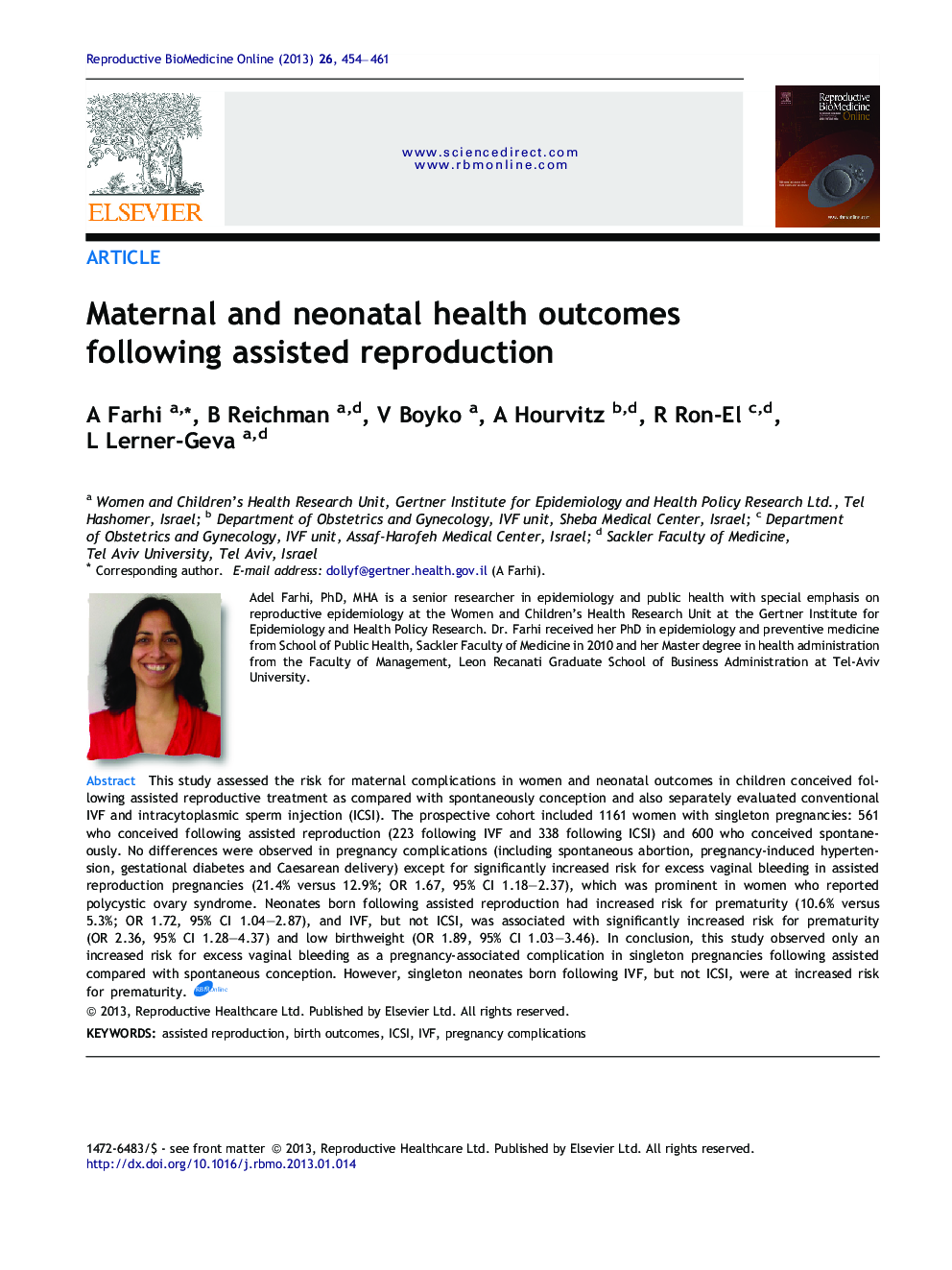| Article ID | Journal | Published Year | Pages | File Type |
|---|---|---|---|---|
| 6189118 | Reproductive BioMedicine Online | 2013 | 8 Pages |
This study assessed the risk for maternal complications in women and neonatal outcomes in children conceived following assisted reproductive treatment as compared with spontaneously conception and also separately evaluated conventional IVF and intracytoplasmic sperm injection (ICSI). The prospective cohort included 1161 women with singleton pregnancies: 561 who conceived following assisted reproduction (223 following IVF and 338 following ICSI) and 600 who conceived spontaneously. No differences were observed in pregnancy complications (including spontaneous abortion, pregnancy-induced hypertension, gestational diabetes and Caesarean delivery) except for significantly increased risk for excess vaginal bleeding in assisted reproduction pregnancies (21.4% versus 12.9%; OR 1.67, 95% CI 1.18-2.37), which was prominent in women who reported polycystic ovary syndrome. Neonates born following assisted reproduction had increased risk for prematurity (10.6% versus 5.3%; OR 1.72, 95% CI 1.04-2.87), and IVF, but not ICSI, was associated with significantly increased risk for prematurity (OR 2.36, 95% CI 1.28-4.37) and low birthweight (OR 1.89, 95% CI 1.03-3.46). In conclusion, this study observed only an increased risk for excess vaginal bleeding as a pregnancy-associated complication in singleton pregnancies following assisted compared with spontaneous conception. However, singleton neonates born following IVF, but not ICSI, were at increased risk for prematurity.The current study evaluated the risk for maternal complications in women and outcomes of children conceived following assisted reproduction treatment as compared with spontaneously conceived pregnancies. In addition, conventional IVF and intracytoplasmic sperm injection (ICSI) were separately evaluated against spontaneously conceived pregnancies. The study cohort included 1161 women with singleton pregnancies: 561 who conceived following assisted reproduction (223 following IVF and 338 following ICSI) and 600 women who conceived spontaneously. No differences were observed in the risk for complications during pregnancy including spontaneous abortion, pregnancy-induced hypertension, gestational diabetes and Caesarean delivery, except for a significantly increased 1.6-fold risk for vaginal bleeding in assisted reproduction treatment. A 1.7-fold excess risk for prematurity was present in the assisted reproduction group. When the two assisted reproduction methods were compared separately with spontaneous conception, IVF cycles were associated with significantly increased risk for prematurity and low birthweight. However, no significantly increased risk was found in preterm birth or low birthweight following ICSI as compare to spontaneous conception. In conclusion, this study did not show increased risk of pregnancy-associated complications in singleton pregnancies following assisted reproduction compared with spontaneous pregnancies except for excess vaginal bleeding. However, singleton neonatals born following IVF, but not ICSI, were at increased risk for prematurity.
